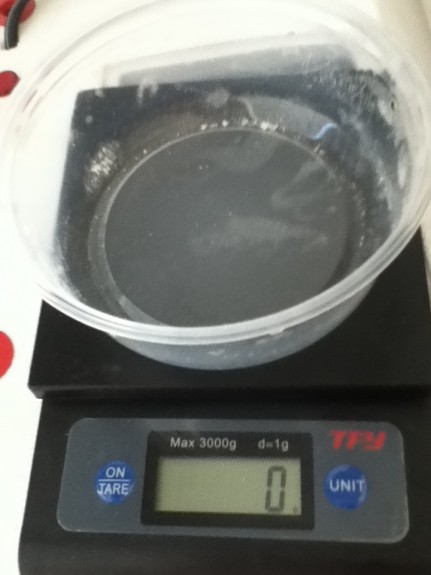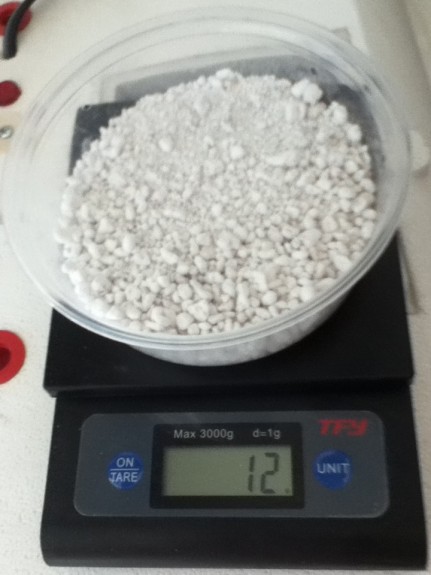There is a variety of methods for successfully incubating leopard gecko eggs. This is the method that I have been using. I have had a lot of success with it and I hope you will too.
[ad#superworm]
Checklist
The first thing we should do is go over all everything we will need for the incubaation process. Here is the list of things that I use to incubate my Leopard Gecko eggs.
- 4.5” Deli Cup and Lid-Holes Punched: Fits two Leopard Gecko eggs nicely, I personally recommend you get them at TSK Supply. Click here for cup. (http://www.tsksupply.com/products/Pro-Kal-8-oz-CLEAR-PUNCHED.html) Click here for lid. ( http://www.tsksupply.com/pro-kal-lid-50-count/) The link should take you right to it. These are the cheapest I have been able to find them.
- Water Mister/Sprayer: Can be found at Walmart or a local nursery. MAKE SURE IT HAS NEVER BEEN USED BEFORE!! A used mister/sprayer might contain toxins that will kill or harm Leopard Gecko eggs.
- Organic Perlite: NO MIRACLE GROW PERLITE!!! Make sure it’s organic with nothing added to it. If it is not organic, it could harm or kill your eggs.
- Simple gram scale: Doesn’t have to be perfectly accurate. You will have to round up to the nearest gram anyway. You will also want your gram scale to have a tare or a zero out function.
- Simple Calculator: One that will add, subtract, multiply, and divide will do.
- Blue Painters’ Tape: For record keeping. This will come in handy later in the process.
- Thermal/Still Air Hova Bator Incubator 1602N: This is the best incubator for incubating Leopard Gecko eggs using this method. You can get one here. (http://geckosgalore.ecrater.com/p/13212414/thermal-hova-bator-incubator-1602n)
Method
First, take your 4.5” Deli Cup and put it on the gram scale and tare it so that the weight of the deli cup is zero. Once you have done that, fill the cup up about halfway with the organic perlite. Do not cover the holes. These will provide airflow throughout the incubation process.
Next, weigh the perlite.
Once you have weighed the cup with the perlite, take that weight and type it into your calculator. Multiply that weight by .666. So in this case, I would take 12 and multiply it by .666 which gives me 7.992 which rounds up to 8. That is the amount of water (in grams) that you will add to the perlite. In the example above you are going to add 8 to 12 to get 20. Here you would fill the perlite with water until the total weight on your scale is 20 grams.
(Even if your calculation of how much water to add comes out to be something like 7.336 or something like that you ALWAYS want to round UP to the next gram. The more humidity you have the better.)
Once you have done all of this, add your Leopard Gecko eggs. Put the lid on and put a piece of blue painters’ tape on the lid. Write the date the eggs were laid, the names of the parents, and the most important part, the weight of the perlite and water.
Date laid: (6/21/12)
Parents: (Striped Tremper Albino Male, Hybino Female)
Weight of water plus perlite: (20 grams)
Now put your eggs in the incubator. The sex of the geckos will be based on the incubation temperature:
(The following are rough guesses of how long the eggs will have to incubate before hatching)
- 81-83°, Mostly Females, roughly 65 days of incubation time.
- 84-86°, Mix of males and females, roughly 55 days of incubation time.
- 87-89°, Mostly Males, roughly 40 days of incubation time.
Do not incubate higher than 90 degrees! The eggs will hatch but the babies will be very aggressive females and MAY NOT breed! Don’t incubate under 80 because the eggs will get too cold and die.
VERY IMPORTANT!!!
Once your eggs are in the incubator, you should take the cup out of the incubator about every 4 days and weigh it again. If the weight doesn’t equal the weight listed on the cup (20 grams in this case) then you should brng it up to that weight again by adding water to it. Move the eggs to a different deli cup with perlite while you do this so you don’t accidentally get the eggs wet. When you are finished bringing the weight back up put the eggs back in and put the cup into the incubator. THIS IS A VERY IMPORTANT STEP, SO DON’T SKIP IT!
Final notes
I have used this method very successfully. Many of you might have read about other ways to incubate Leopard Gecko eggs, particularly recommending different water to perlite ratios. I have tried those methods for about a year and I never had an egg hatch. Of course, I am not saying that these methods are always unsuccessful, and that there could have been things wrong with what I was doing, however I have had my best success with the method I describe above.
If anyone has any questions, please leave a comment below.






Very well written article. Good job. Has the basic details needed to incubate leo eggs. I’ll refer people back to this article in the future.
Excellent article; Well written with clear instructions and illustrations. Thank you for explaining it so well.
Great article with ALL I need to know! Thanks again for everything. You’ve been so helpful. Quickly, (my daughter could tell me this, but she’s in bed) how often does a female lay eggs, and can you successfully put more than one female in a habitat with one male (ie 2 females with one male) or will they fight?
@Kimberly, Females lay generally 2 eggs once a month throughout their breeding season which tends to be from February to the end of October. Some leos breeding seasons differ from others. Usually if it is a first time egg laying female she will only lay 1 egg and that egg will be infertile.
You can put any number of females in with a male. NEVER put more then one male in the same cage. They will fight, which could result in death. I put 1 male with 2-3 females depending on how big my cage is. I put my leos in a rack system. I put my single adults in a 12 qt sterilite tub and 1 male with 2 females in a 28 qt sterilite tub. I put my single babies and juveniles in 6 qt sterilite tubs.
You asked a question earlier when you were emailing me. You asked me what a genetic mutt is. A genetic mutt is a Leopard Gecko that you breed where you don’t know either of the parents morphs you bred together to produce those babies. A lot of Leopard Gecko breeders look down on breeding your geckos if you don’t know what morph they are. Here is another example of a genetic mutt. There are 3 kinds of albinos in Leopard Geckos. Tremper Albino, Bell Albino, and Rainbow Albino (also known as the Las Vegas Albino.) The albinos in Leopard Geckos are not compatible which means they shouldn’t be bred to each other. An example of that would be breeding a Tremper Albino to a Bell Albino. That just messes up the gene pool, like in dogs.
I hope that I put that so that you could understand it. When I start talking gecko genetic talk or any gecko talk, I get carried away. 🙂
You can email me or comment on this article if you have anymore questions. Since that was just the summary of Leopard Gecko Genetics. 🙂
Thanks
Brian Magnusson
Gecko’s Galore
I have noticed here recently, that my Leo gecko eggs have
Been growing white fuzzy mold. What does this usually mean
And how can I prevent it? I am using Hatchrite substrate. If anyone
Has any suggestions that would be of great help!
Thanks so much!
Hi Jennifer!
This usually means that the humidity levels are to high. I would recommend changing your substrate to perlite and using this method entirely. If you do it right, the humidity levels should be perfect.
Let me know if you have anymore questions!
Hi! Well, we got 2 leo geckos from petsmart and they told us that they were females. Being our first time with them we had no idea of what to look for and just trusted the store. Fast forward 4 months we notice they are fighting and decided to look up reasons and in the process we found out that one is male and one is female AND the female is already pregnant. We gave her crickets and worms covered in calcium powder. We are positive she will soon lay her eggs because she is big! We tried separating them ( inside our 55 gallon tank) but they get very agitated when apart and they start digging towards one another. When we let them together they will just basically sleep on top of each other. Is there a way that we can stop them from breading, but keep them together?
There is no way to keep them together and not have them breed. Even though it looks like they really want to be together, it’s more likely that the male is trying to get to the female because he wants to breed and the female is just doing what geckos do when they get to the edge or side of something. Your best bet is to cover the divider with opaque contact paper or something like that so they can’t see each other. Google “leopard gecko breeding” to find out about what to do if there are eggs. Although most instructions say you need an incubator, if there’s a place you can keep the eggs where they are guaranteed a steady temperature between 80-88 degrees, that could work as well. Good luck.
Thank you so much for your input. We are new to this and we were thinking to keep the eggs by the heating pad we have in the terrarium, the temperature is always on the 80 ‘s in there. We will use your advice about the opaque division and make sure they are separated. Thanks again!
Hi Im new to breeding leopard geckoes. I got 2 leopard geckoes from petsmart back in october that were both supposedly female, but when I found a pair of eggs in their terrarrium (10 gallon) I looked up how to sex them and I apparently have a male and female. Sadly I threw those eggs out before I thought about sexing them, now I have a pair of eggs they laid last week and I have them incubating at 87.5 degrees. I have heard that they are supposed to be hard but they are still kind of soft, do you think that they are fertile?
Leopard gecko eggs start out soft and gradually harden. If they feel like water balloons, they are probably not fertile. In general, the best thing to do is to incubate them until they either hatch or stink. There have been many cases where eggs that looked good had nothing inside, and eggs that looked terrible produced healthy offspring.
I usually candle mine after the first week or around there. If they eggs are fertile, they will be a pinkish color. If they are infertile, they will just be yellow. I honestly get way to excited and candle my eggs a little to much. You want to handle them as little as possible during the incubation period.
Thanks for the advice.
How old will they need to be before I sell them?
It’s best to wait until they are 15 grams to sell them. That will generally be at about 6 weeks, but you should get a gram scale so you can weigh them
Hi Paul,
I usually wait until they are 6 weeks, unless they have quite a bit of weight on them to give them a good start. I wait that long because not everybody knows how to really take care of neonates. I have sold babies before 6 weeks but they were to people who I knew had leopard gecko experience and knew how to take care of little babies. But to the average person I would go with Aliza’s advice.
-Jen
Hi, apparently while I on vacation a leopard gecko laid some eggs. I won’t return to work till Monday and I have no experience on hatching geckos
These eggs, depending on where they were laid, may not be viable by the time you get back. For best results (besides reading this article), google “Leopard gecko breeding” and do some research.
My female gecko laid her second and third eggs today. I followed the instructions immediately with peat moss instead of perlite. (There is no fertilizer or other chemicals in the moss) How often do I need to add water to the incubator? And how old do the males generally have to be to actually fertilize the egg? I don’t want to get my hopes up but this is my female’s second round of laying egg/s and I want to have an idea of whether or not I should even expect the eggs to be fertile or not. My male is about 7 months old and the female is probably a year or so now.
Ideally the eggs should be in a closed container with no airholes and there should be no need to add water. I’ve never incubated in peat moss and have no idea how it will hold the moisture. I don’t usually need to add any water when using perlite. Seven months is a little young for the male but not impossible. Good luck.
We put our first 2 eggs in most and we lost them because of mold built up… The water ratios were very confusing, but it was also our first time having eggs. We bought Hatch-rite online and the new eggs that she laid are going strong! One is about to hatch and the other 2 are still a month away.
Hi my gecko just laid 2 eggs I am new to this just bought it a week ago wondering what I can do to incubate the eggs I am unsure what to use right now they are in a container with paper towel where mom usually sleeps I got some blocks u add water to n let it absorbe to be used in the tank but as for that I have nuttin help please I have read few articles but hard understand and what is perlite
Perlite is a white styrofoamy substance that is mixed into topsoil and also used for growing plants. Ask at a garden center. If you get some, get the plain perlite and not the perlite with fertilizer. Eggs need to be incubated at high humidity in a place where the temperature stays steady within a degree or two anywhere from 80-88 degrees farenheit. The most common thing to do is to buy a commercial incubator (the “starter” incubators are the hobovator or the zoo-med incubator that looks pretty much the same but comes with the better thermostat that you’d have to buy if you get the hobovator). Some people make their own incubators and some find a place in the house that meets these conditions. If you female has never been with a male, the eggs will not be fertile. It may be too late for these eggs, but there are more coming most likely in 2 weeks or so. I will send you my breeding article through your email.
Is it true, and I’ve done research on this, that you should find the embryo in the egg, or the bull’s-eye, and turn the eggs so the bull’s-eye is on top? I have heard both marked the egg the way you found it and leave it, and turn the eggs on the embryo is on top. What is best to do?
Congrats on the eggs. Opinion is divided on whether the bulls eye needs to be on top. However, it’s pretty certain that if the eggs are turned within the first day or so it’s not a problem (as a matter of fact, one source I read stated that leopard gecko eggs will not be harmed if turned at any point, but I’m not going to test that out). So, if you want to be certain, you could always turn the eggs, when you find them, so the bulls eye is at the top.